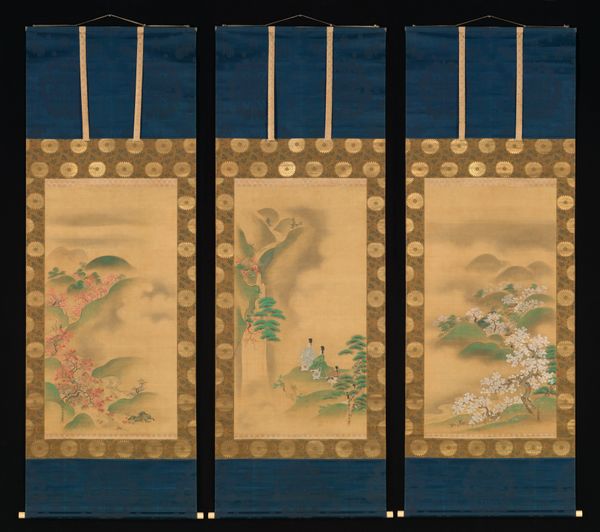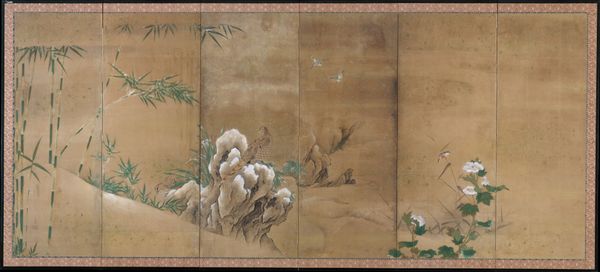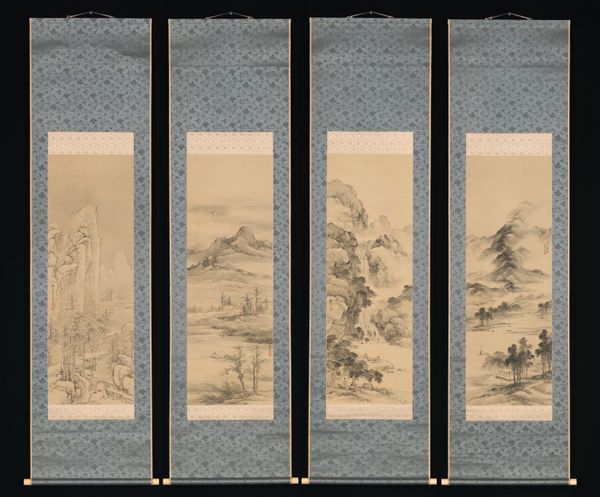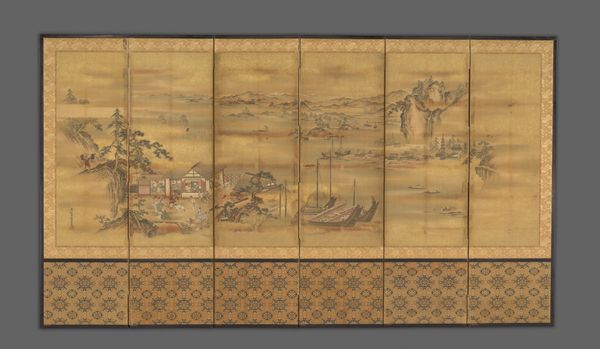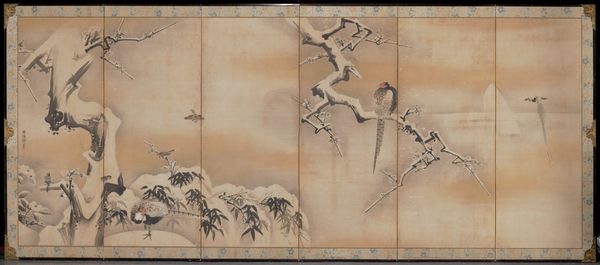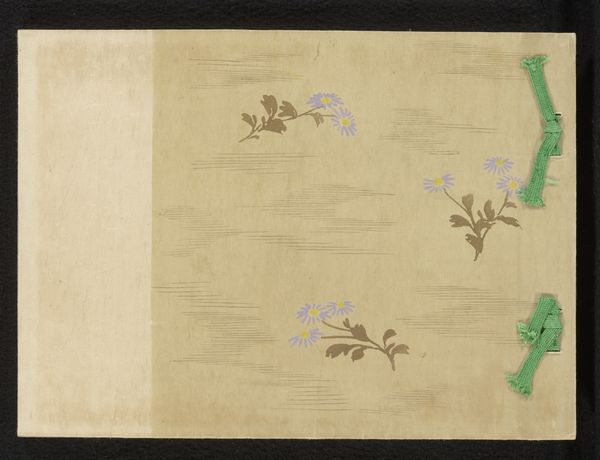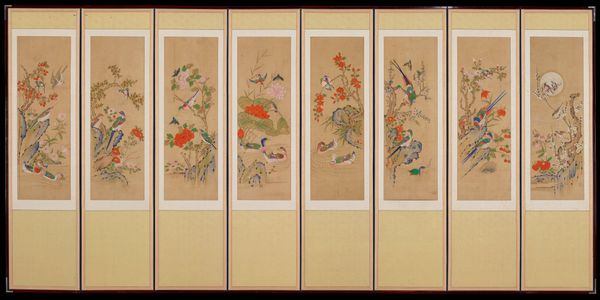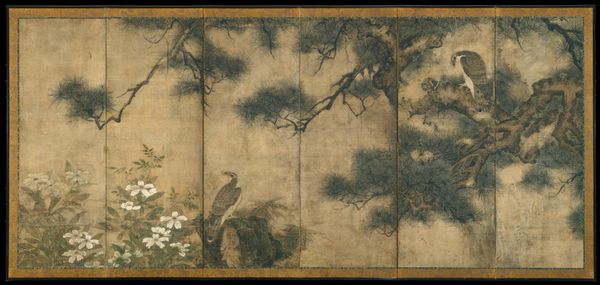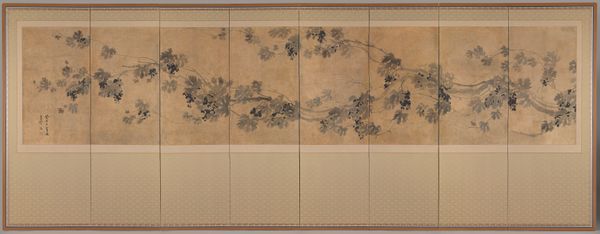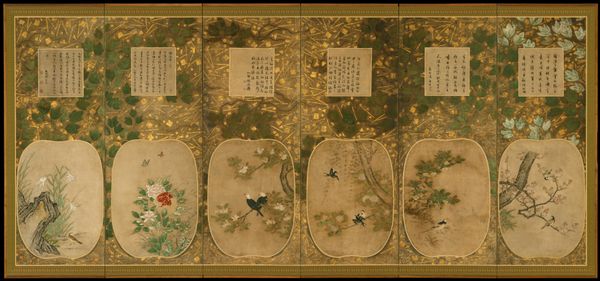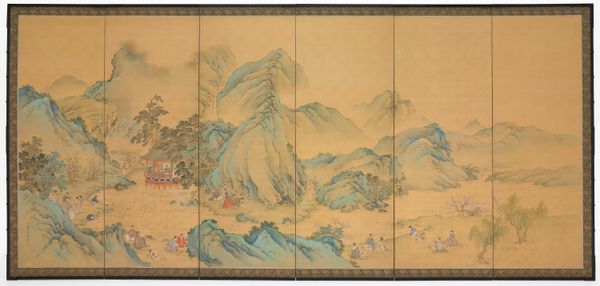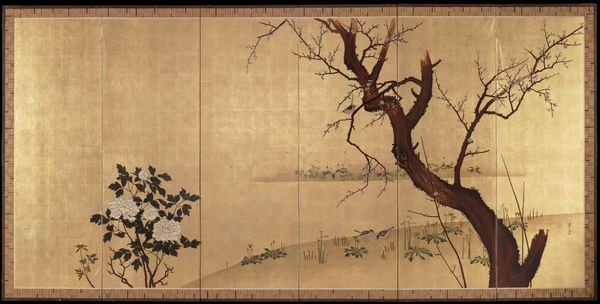
Eight Daoist Immortals, Cranes, and Gibbons 1667 - 1733
0:00
0:00
tempera, painting, ink
#
tempera
#
painting
#
asian-art
#
landscape
#
ukiyo-e
#
figuration
#
ink
#
orientalism
Dimensions: 14.76.23 Overall with knobs: 94 3/4 × 37 1/2 in. (240.7 × 95.3 cm) Image: 58 5/8 × 35 in. (148.9 × 88.9 cm) Overall with mounting: 94 3/4 × 35 in. (240.7 × 88.9 cm) 14.76.24, .25 Overall with knobs: 94 3/4 × 37 1/2 in. (240.7 × 95.3 cm) Image: 58 5/8 × 30 1/4 in. (148.9 × 76.8 cm) Overall with mounting: 94 3/4 × 35 in. (240.7 × 88.9 cm)
Copyright: Public Domain
Kano Tanshin crafted this ink-wash painting on silk, featuring Eight Daoist Immortals, Cranes, and Gibbons, in the late 17th or early 18th century. Notice the prominent cranes, symbols of longevity and auspiciousness in East Asian art. They often appear alongside Daoist immortals, figures believed to have achieved immortality through spiritual practices. The presence of gibbons, with their human-like qualities, can be interpreted as symbols of wisdom. The grouping of immortals, such as we see here, reminds us of similar gatherings in Renaissance art, where classical figures convene in harmonious landscapes. The repetition and adaptation of such motifs across cultures suggest a universal human impulse to depict idealized gatherings of wise figures. The crane, like the phoenix, resurfaces across millennia and continents, evolving from a symbol of vigilance in ancient Greece to a symbol of marital happiness in China. This non-linear, cyclical progression highlights how visual symbols transcend time, evolving and acquiring new layers of meaning in different contexts.
Comments
No comments
Be the first to comment and join the conversation on the ultimate creative platform.

